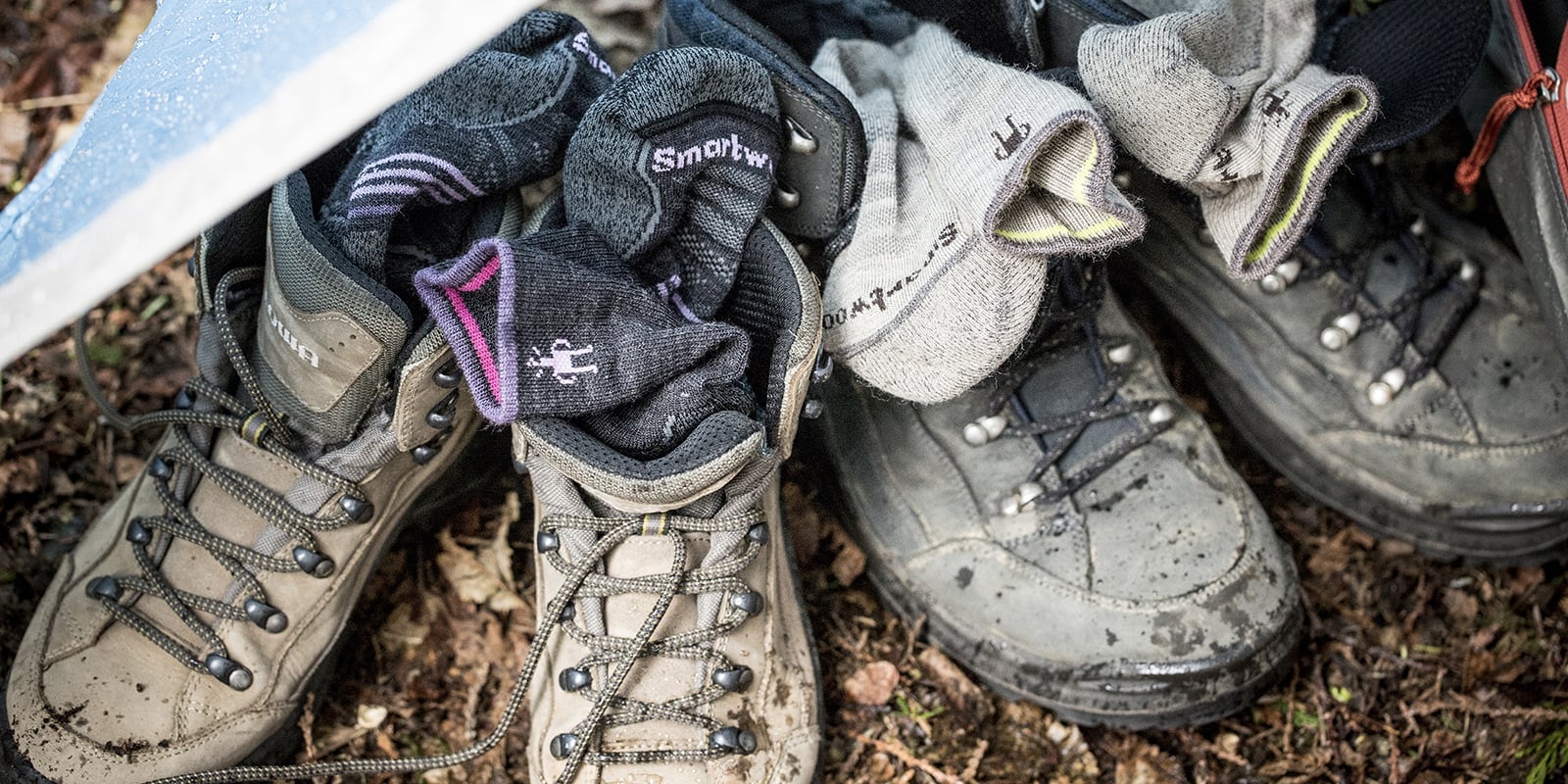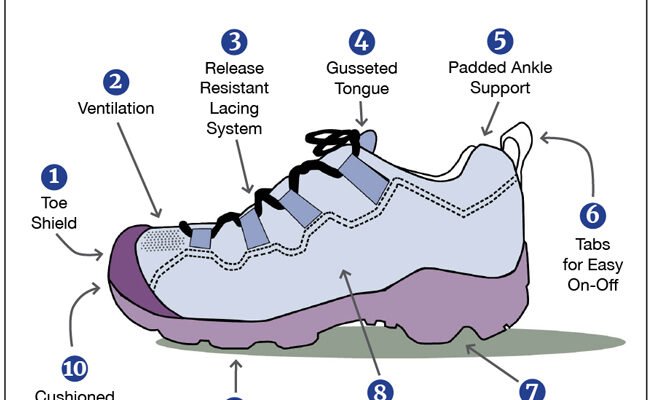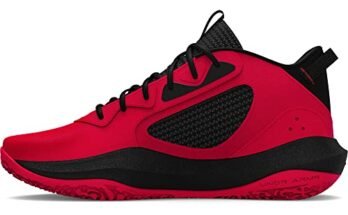When buying hiking shoes, consider the fit, support, traction, and durability. These factors are crucial for comfort and safety on the trails.
Are you ready to hit the trails and explore the great outdoors? Choosing the right hiking shoes is essential for an enjoyable and safe outdoor adventure. From rugged mountain terrain to gentle forest paths, the right pair of hiking shoes can make all the difference.
Before making a purchase, it’s important to consider various factors such as fit, support, traction, and durability. By paying attention to these key elements, you can ensure that your hiking shoes are comfortable, supportive, and capable of handling the challenges of the trail. We’ll explore the important factors to consider when buying hiking shoes, helping you make an informed decision for your next outdoor excursion.

Credit: www.reddit.com
Choosing The Right Type Of Hiking Shoes
When choosing hiking shoes, consider the terrain and weather conditions you’ll encounter. Look for proper ankle support and a good fit to prevent blisters. Ensure the shoes are durable and provide adequate traction for the best hiking experience.
When it comes to hiking, having the right pair of shoes can make all the difference. There are various types of hiking shoes available in the market, and choosing the right one can be overwhelming. However, it is crucial to select the right type of hiking shoes to ensure that you have a comfortable and safe hiking experience. In this post, we will focus on the subheading “Choosing the Right Type of Hiking Shoes” and discuss two essential factors to consider when selecting hiking shoes: terrain and ankle support.Consider The Terrain
The terrain you plan to hike on plays a significant role in determining the type of hiking shoes you need. For instance, if you plan to hike on rocky terrain, you need shoes with a durable and sturdy sole that can withstand rough terrain. On the other hand, if you plan to hike on flat terrain, you can opt for shoes with a softer sole that offers more comfort. It is also essential to consider the climate and weather conditions of the terrain you plan to hike on. If you plan to hike in wet conditions, you need shoes that are waterproof or water-resistant to keep your feet dry. Similarly, if you plan to hike in hot weather conditions, you need shoes that are breathable to prevent your feet from sweating excessively.Determine The Ankle Support Needed
Another crucial factor to consider when selecting hiking shoes is ankle support. Ankle support is vital, especially when hiking on uneven terrain. There are three types of ankle support available in hiking shoes: low-cut, mid-cut, and high-cut. Low-cut hiking shoes are perfect for flat terrain and provide minimal ankle support. Mid-cut shoes provide more ankle support than low-cut shoes and are suitable for moderate terrain. High-cut hiking shoes provide the most ankle support and are ideal for rough terrain. In conclusion, when selecting hiking shoes, it is essential to consider the terrain and ankle support needed. By keeping these factors in mind, you can choose the right type of hiking shoes that provide comfort, safety, and a great hiking experience.
Credit: www.jeffryanauthor.com
Fitting And Comfort
When it comes to buying hiking shoes, fitting and comfort are crucial factors to consider. Proper fit ensures a comfortable and enjoyable hiking experience, while also minimizing the risk of foot injuries. Here’s a closer look at the importance of proper fit and the break-in period when purchasing hiking shoes.
Importance Of Proper Fit
Selecting the right size of hiking shoes is essential for comfort and safety. Ill-fitting shoes can lead to blisters, hot spots, and discomfort, which can quickly ruin a hiking trip. It’s important to ensure that the shoes provide adequate support and stability while allowing enough room for natural foot movement. A snug fit without any pressure points is ideal.
Break-in Period
New hiking shoes often require a break-in period to mold to your feet and become more comfortable. During this period, it’s common to experience some discomfort or rubbing. It’s important to gradually wear the shoes on shorter hikes to allow them to conform to your feet without causing excessive discomfort or blisters. This process helps prevent discomfort during longer treks.
Material And Durability
When it comes to purchasing hiking shoes, the material and durability play a crucial role in ensuring comfort and longevity. Understanding the different aspects of the materials used and the durability of the shoes can help you make an informed decision.
Breathability
One of the key factors to consider when evaluating the material of hiking shoes is breathability. Breathable materials such as mesh or synthetic fabrics allow air to circulate, keeping your feet cool and reducing the risk of moisture buildup. This is particularly important during long hikes or in warm weather.
Waterproofing Features
For hikers who frequently encounter wet conditions, waterproof features are essential. Look for hiking shoes made with waterproof membranes such as Gore-Tex or eVent, which provide a barrier against moisture while still allowing sweat to escape, keeping your feet dry and comfortable.
Traction And Outsole
When it comes to hiking shoes, one of the most important features to consider is the traction and outsole. The right outsole can mean the difference between a safe, enjoyable hike and slipping and sliding your way through the trail. Here are some things to keep in mind:
Grip On Various Surfaces
When you’re on the trail, you’re likely to encounter a variety of surfaces, from loose gravel to slick rocks to muddy paths. Look for a hiking shoe with a sole that offers good grip on all of these surfaces. The sole should be made of a durable, sticky rubber that can grip even the most challenging terrain.
Outsole Design
The design of the outsole can also impact the shoe’s performance on the trail. Look for a hiking shoe with an outsole that has a deep, multi-directional lug pattern. This will provide better traction and stability on uneven terrain. The deeper the lugs, the better the grip on loose or soft surfaces, while the multi-directional pattern helps with grip on lateral movements.
Additionally, a wider outsole can provide more stability and support, especially on rocky or uneven terrain. A narrower outsole, on the other hand, can provide more flexibility and agility, making it a good choice for more technical hikes.
Materials
Finally, consider the materials used in the outsole. Some hiking shoes use a harder, more durable rubber in the outsole, while others use a softer, more flexible rubber. The harder rubber will last longer, but the softer rubber will provide better grip on wet surfaces.
When it comes to traction and outsole, there are many factors to consider. Keep these in mind when shopping for hiking shoes to ensure you find a pair that will keep you safe and comfortable on the trail.
Weight And Support
Choosing the right hiking shoes involves considering factors like weight and support. It’s crucial to find a balance between having a lightweight design and adequate foot and ankle support.
Lightweight Vs. Sturdy
Lightweight shoes are ideal for short hikes and fast-paced treks, providing agility and speed. However, sturdy shoes offer more durability and protection for longer, challenging hikes.
Midsole Support
Midsole support is essential for maintaining stability and preventing foot fatigue on the trail. Look for shoes with cushioning and arch support to ensure comfort and prevent injuries.

Credit: www.rei.com
Toe Protection And Toe Box
Ensure your hiking shoes have sturdy toe protection and a spacious toe box to prevent discomfort and potential injuries on the trails. A well-fitted and protective toe box is essential for a comfortable and safe hiking experience.
Toe Cap
When buying hiking shoes, consider a reinforced toe cap to protect your toes from impacts.Room For Toe Movement
Ensure the hiking shoes provide ample room for toe movement to prevent discomfort during long hikes. In hiking shoes, toe protection and toe box are crucial factors to consider. The toe cap should be reinforced to shield your toes from impacts while the room for toe movement must be sufficient to avoid discomfort on long hikes.Lacing Systems
When choosing hiking shoes, the lacing system is a crucial factor to consider. The right lacing system can enhance comfort, support, and performance on the trail. Let’s explore the different lacing systems and their impact on your hiking experience.
Traditional Vs. Quick-lace Systems
Traditional lacing systems involve standard laces that are manually tied to achieve a snug fit. On the other hand, quick-lace systems typically feature a single-pull tightening mechanism, allowing for swift adjustment and secure closure.
Customizable Fit
Customizable lacing systems enable hikers to achieve a personalized fit, catering to individual foot shapes and preferences. This adaptable feature ensures maximum comfort and support throughout the hike.
Price Range And Budget
Consider the price range and your budget when purchasing hiking shoes. Ensure the cost aligns with the quality and features you need for comfort and durability on the trails. Strike a balance between affordability and performance to make a wise investment in your outdoor gear.
When choosing hiking shoes, it’s essential to consider your budget and the price range that fits within it.Quality Vs. Cost
The quality of hiking shoes is crucial, but that doesn’t mean you have to overspend.Value For Money
Ensure you get value for money by balancing quality and cost to meet your hiking needs effectively.Frequently Asked Questions
What Is Considered Good Hiking Shoes?
Good hiking shoes provide ankle support, durable traction, waterproofing, and breathability. They should also be comfortable and fit properly.
Should You Size Up Or Down In Hiking Shoes?
Size up in hiking shoes for extra comfort and prevent blisters. Ensure a snug fit without pinching.
How Do I Know If My Hiking Shoes Are Good?
To determine if your hiking shoes are good, check for proper fit, durability, traction, support, and comfort.
What Is The Correct Footwear For Hiking?
The correct footwear for hiking should provide proper support, stability and traction. Look for shoes or boots with thick, durable soles and ankle support. Choose breathable materials to keep your feet cool and dry. Make sure the shoes fit well and are comfortable for long walks.
Avoid open-toed sandals or flip flops.
Conclusion
When purchasing hiking shoes, prioritize comfort, durability, and fit. Research thoroughly, considering your specific needs and terrain. Quality matters over price; invest wisely for long-term use. Your hiking experience greatly depends on the shoes you choose, so choose wisely. Happy trails await with the right pair!



